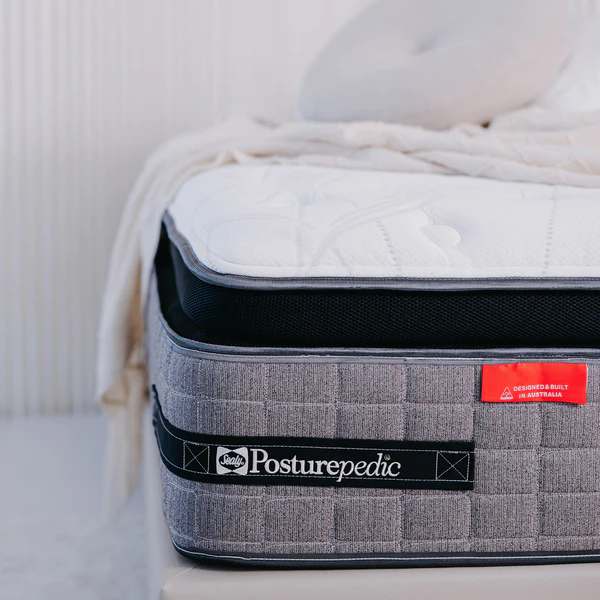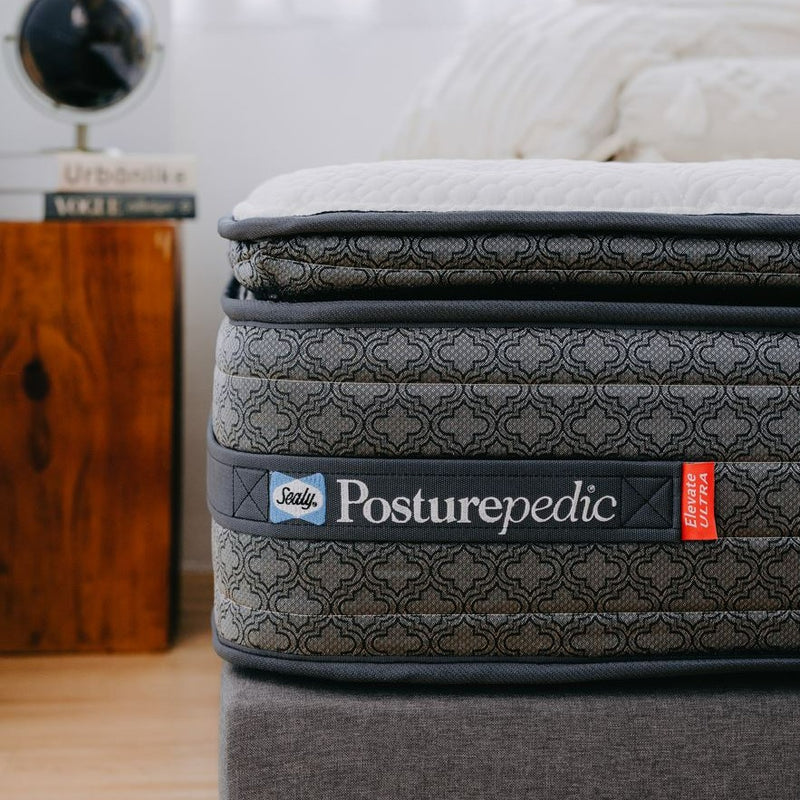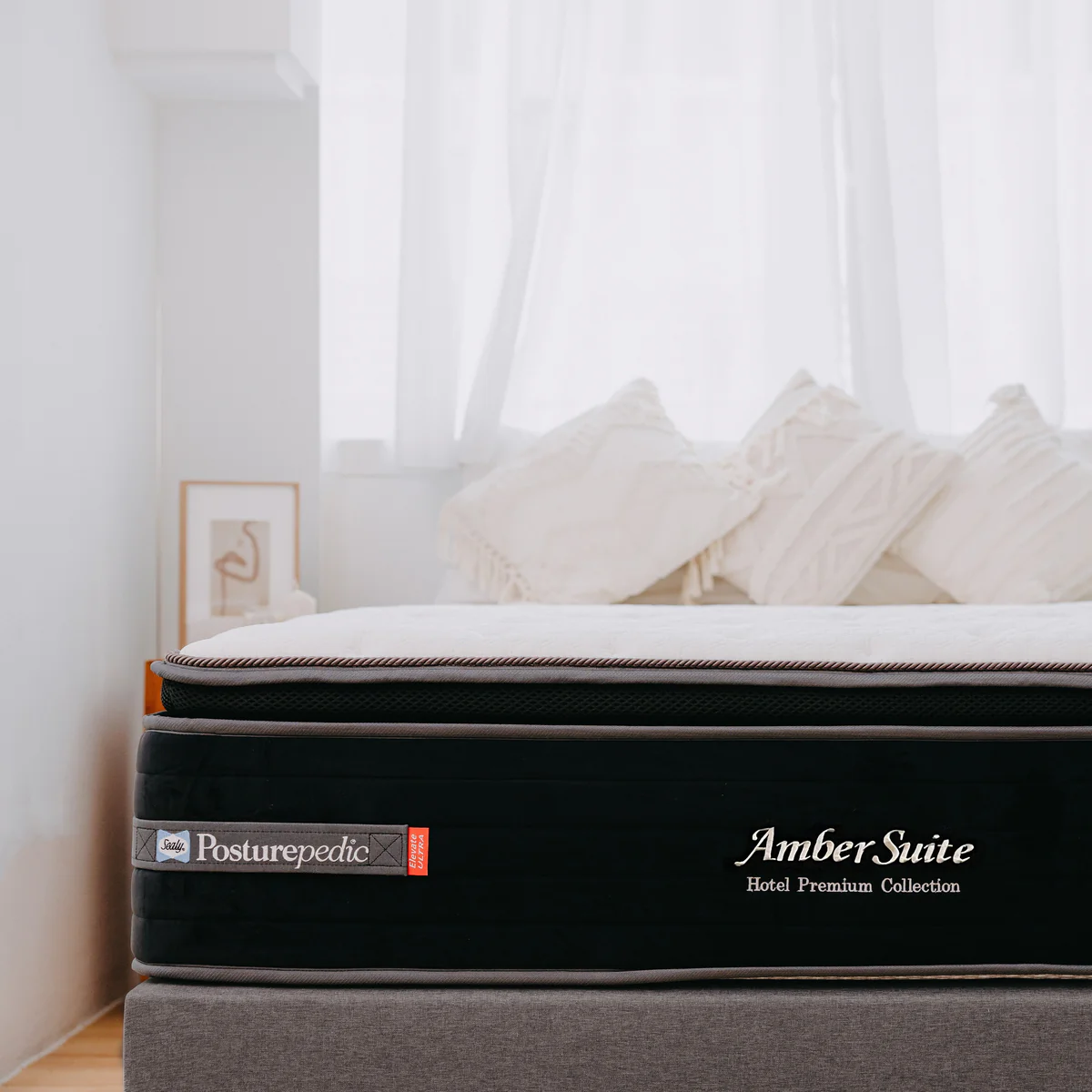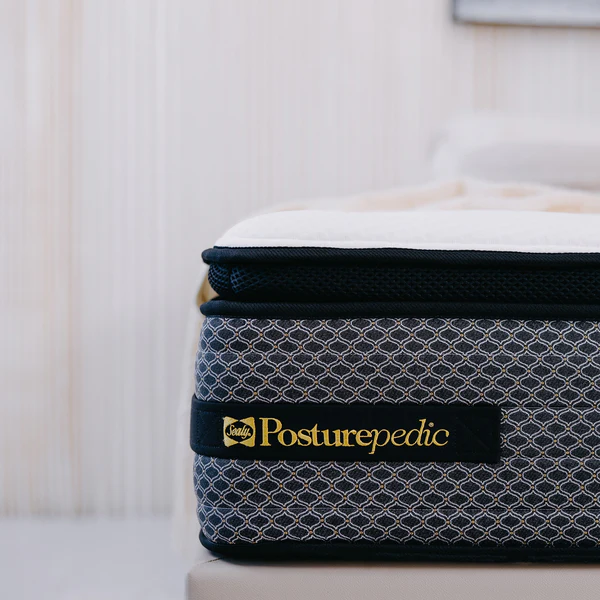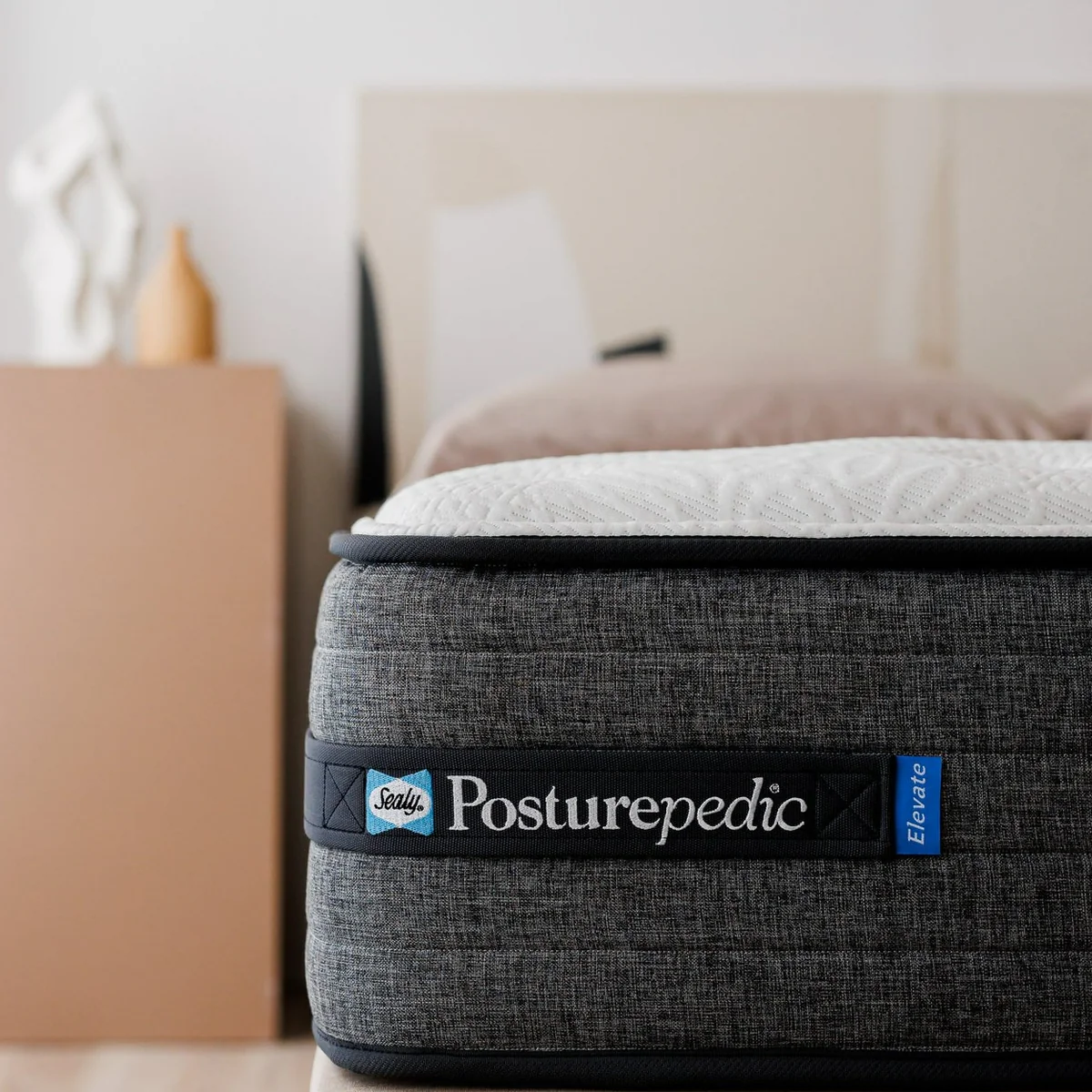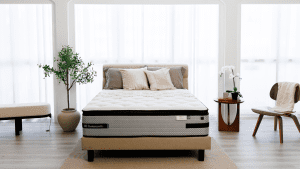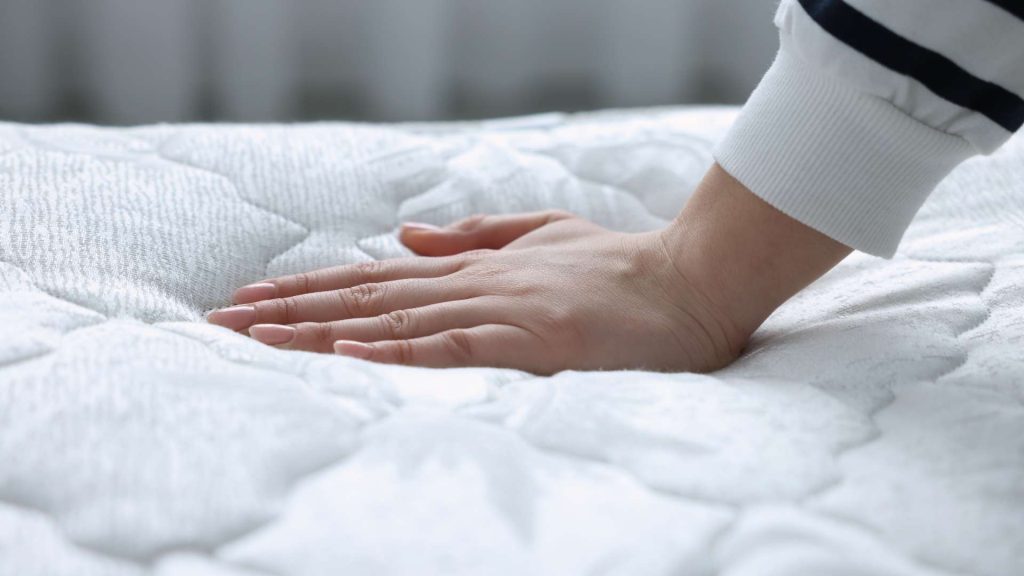
The comfort level of your mattress describes its conformance, or the ability to mould to your shape and relieve pressure from the body’s pressure points.
Because of its cushioning qualities, a Plush is often popular amongst side sleepers and those who prefer to ‘sink in’ to their mattress. Firm mattresses are ideal for stomach and back sleepers, and popular amongst older adults. Learn what really makes a mattress Plush, Medium or Firm, and which comfort option is right for you.
Plush, Medium and Firm?
Sealy’s scale of comfort encompasses Ultra Plush and Plush options, followed by Medium, Cushion Firm and Firm. Determining which comfort level is right for you is a process of trial and error. The best way to find out if you suit a mattress is simply to try one in person. However, there are some general guidelines that may help you get started.
What is the difference?
Ultra Plush and Plush make use of supersoft foams and added comfort layers. Plush beds are often warmer, as the upper layers envelop more of the body.
A Medium comfort level offers the best of both worlds, combining quality foams without cradling the body.
Cushion Firm and Firm mattresses utilise dense foams that provide comfort without the sinking-in feeling. These mattresses usually hold you aloft on the sleep surface instead of cradling you, allowing for a naturally cooler sleep.
Regardless of your comfort option, the Sealy Posturepedic support system remains the same; a Plush mattress will give you the same level of orthopaedic support as a Medium or Firm. What does this mean?
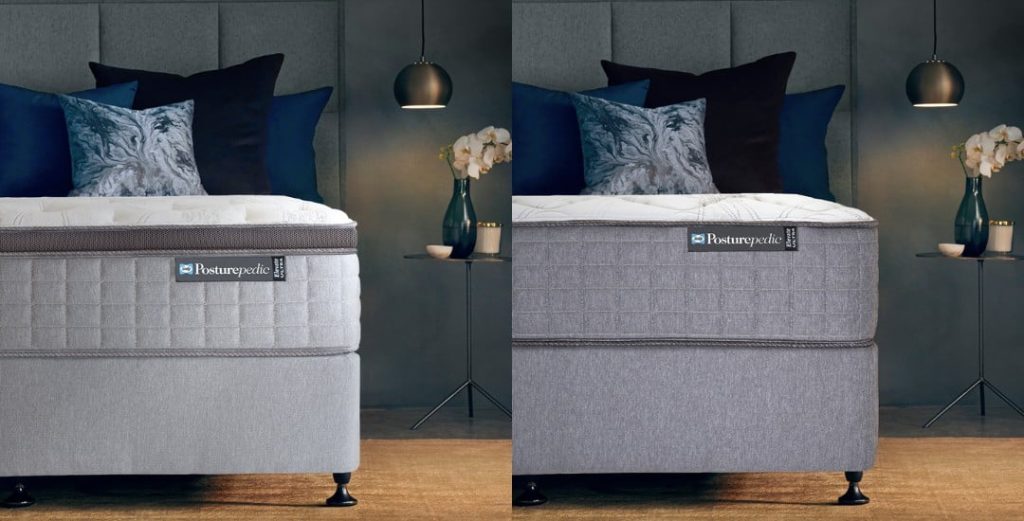
How is mattress comfort created?
The comfort of a mattress is synonymous with firmness. While some brands use a numeric scale to represent comfort or firmness, we use terms like Plush, Medium and Firm.
These terms refer to the types of comfort layers used inside the mattress, such as foams, and the ways they are assembled and layered. There are many different ways to incorporate foams and exotic fibres into a mattress in order to give it a soft feel. Each of our mattress models vary in terms of their support structures and designs, but they all offer a variety of comfort options to choose from.
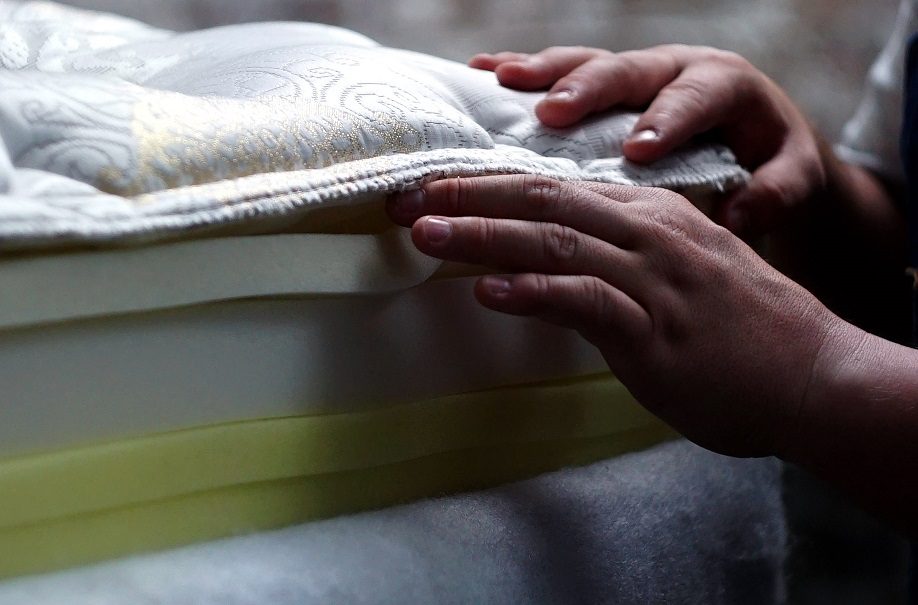
In addition to supersoft foams and fibres, Plush models usually feature a gusseted, EuroTop or PillowTop construction. These are the extra sections of padding above the core of the mattress, designed to transition you into the support structure and provide additional cushioning. In contrast, Firm mattresses feature a TightTop, or a single-layer surface that is denser without the added padding. You can see an example of this below.
While Plush mattresses often feel cloud-like and envelop the body, Firmer models tend to hold the body ‘aloft’ on the surface. Medium mattresses provide the best of both worlds, combining a Euro or PillowTop design with soft yet dense foams to facilitate some cushioning without feeling like you’re sinking into the comfort layers.
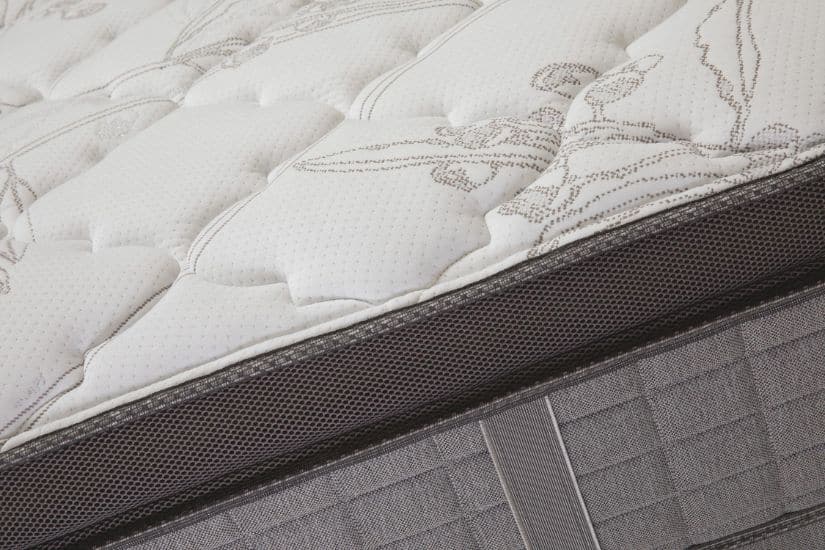

Comfort vs Support
When shopping for a mattress, it is easy to be confused by terminology and the subtle differences between mattress brands, makes and models. It is important to know, however, that there should be a difference between the comfort of a mattress and the support it offers.
At Sealy, when we mention support, we are referring to the structure beneath the comfort layers — the coils. Whether your mattress is a Plush or a Firm, the coils beneath the surface remain the same. For example, a Posturepedic Elevate mattress has our AlignSupport coil in every comfort option from softest to firmest.
On the other hand, comfort refers to the cushioning above the coils. An Elevate Ultra Plush will vary significantly from an Elevate Ultra Firm with different foams and often a different construction style. See the example above where the Firm mattress (on the right) has a TightTop without the gusseted padding on top.

The important point to note is that your mattress should not sacrifice support for comfort. It should be able to offer a Plush feel while maintaining appropriate support for your body, or a Firm feel without feeling uncomfortable or inflexible.
Which comfort is right for you
These softer options are popular with side sleepers, as their sleep position naturally places more stress on the body’s pressure points, especially the hips and shoulders. The added cushioning allows the body’s heaviest points to rest without constricting blood flow, reducing tossing and turning throughout the night.
Plush mattresses are also ideal for those who feel uncomfortable with harder surfaces or denser foams. They are also good for sleepers who often feel cold at night, as a Plush tends to envelop the body as you sink in. This naturally traps more heat as the mattress stays in contact with more of your body.
Back sleepers: Cushion Firm, Firm or Medium
This position requires sufficient support from your mattress in order to maintain the alignment of your spine and prevent you from sinking too far down. Back sleepers have a more even distribution of weight across the mattress than side sleepers. With your pressure points under less stress, a firm-to-medium choice will provide adequate comfort and spinal support.
Front sleepers: Cushion Firm, Firm or Medium
In this position, your hips and pelvis sink downwards as one of the heaviest points of your body. Without the appropriate support, your body may sink into the mattress, causing spinal misalignment and discomfort. Front sleepers therefore often prefer firmer comfort choices.
Side sleepers: Plush or Medium
If you sleep on your side, you likely place extra pressure on your shoulders and hips — the heaviest points of the body. Side sleepers are typically more comfortable on a soft-to-medium comfort level, as pressure points are appropriately cushioned while the spine is supported.
Mattress comfort FAQs
While body impressions are normal and may be more visible in plusher models, they do not impact the quality or performance of your mattress. All Sealy Posturepedic mattresses come with a 10-year guarantee for your peace of mind.
A Plush mattress is often suited to side sleepers who benefit from the extra cushioning on the hips and shoulders. Back and front sleepers may find this level too soft, but this is a highly personal choice. It is best to try mattress options in person.
A Plush mattress is often suited to side sleepers, while Firmer options are typically ideal for back and front sleepers. This may change depending on personal needs, age, health, and temperature considerations. It is always best to try mattress options in person.
A Plush mattress is often suited to side sleepers, while Firm and Medium options are typically ideal for back and front sleepers. This may change depending on personal needs and temperature considerations. It is always best to try mattress options in person. For guest rooms, a Medium is often preferred.
Plush mattresses are better for side sleepers because they offer more pressure relief for major pressure points such as the hips, shoulders and legs. This is helpful for side sleepers who may experience tossing and turning throughout the night due to discomfort.
In Singapore, older adults tend to prefer Firm mattresses for personal comfort, sleep positions and temperature reasons. This is a highly personal choice, so it is best to try mattress options in person.


